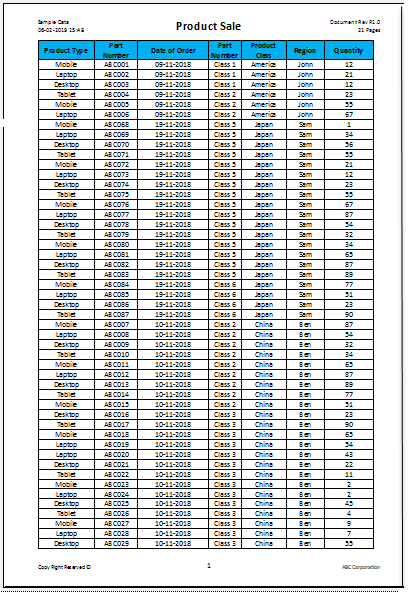Excel for Microsoft 365 Excel 2021 Excel 2019 Excel 2016 Excel 2013 Excel 2010 Excel 2007 Excel Starter 2010 More…Less
You can add headers or footers at the top or bottom of a printed worksheet in Excel. For example, you might create a footer that has page numbers, the date, and the name of your file. You can create your own, or use many built-in headers and footers.
Headers and footers are displayed only in Page Layout view, Print Preview, and on printed pages. You can also use the Page Setup dialog box if you want to insert headers or footers for more than one worksheet at a time. For other sheet types, such as chart sheets, or charts, you can insert headers and footers only by using the Page Setup dialog box.
Add or change headers or footers in Page Layout view
-
Click the worksheet where you want to add or change headers or footers.
-
On the Insert tab, in the Text group, click Header & Footer.
Excel displays the worksheet in Page Layout view.
-
To add or edit a header or footer, click the left, center, or right header or footer text box at the top or the bottom of the worksheet page (under Header, or above Footer).
-
Type the new header or footer text.
Notes:
-
To start a new line in a header or footer text box, press Enter.
-
To include a single ampersand (&) in the text of a header or footer, use two ampersands. For example, to include «Subcontractors & Services» in a header, type Subcontractors && Services.
-
To close headers or footers, click anywhere in the worksheet. To close headers or footers without keeping the changes that you made, press Esc.
-
-
Click the worksheet or worksheets, chart sheet, or chart where you want to add or change headers or footers.
Tip: You can select multiple worksheets with Ctrl+Left-click. When multiple worksheets are selected, [Group] appears in the title bar at the top of the worksheet. To cancel a selection of multiple worksheets in a workbook, click any unselected worksheet. If no unselected sheet is visible, right-click the tab of a selected sheet, and then click Ungroup Sheets.
-
On the Page Layout tab, in the Page Setup group, click the Dialog Box Launcher
.
Excel displays the Page Setup dialog box.
-
On the Header/Footer tab, click Custom Header or Custom Footer.
-
Click in the Left, Center, or Right section box, and then click any of the buttons to add the header or footer information that you want in that section.
-
To add or change the header or footer text, type additional text or edit the existing text in the Left, Center, or Right section box.
Notes:
-
To start a new line in a header or footer text box, press Enter.
-
To include a single ampersand (&) in the text of a header or footer, use two ampersands. For example, to include «Subcontractors & Services» in a header, type Subcontractors && Services.
-
Excel has many built-in text headers and footers that you can use. For worksheets, you can work with headers and footers in Page Layout view. For chart sheets or charts you need to go through the Page Setup dialog.
-
Click the worksheet where you want to add or change a built-in header or footer.
-
On the Insert tab, in the Text group, click Header & Footer.
Excel displays the worksheet in Page Layout view.
-
Click the left, center, or right header or the footer text box at the top or the bottom of the worksheet page.
Tip: Clicking any text box selects the header or footer and displays the Header and Footer Tools, adding the Design tab.
-
On the Design tab, in the Header & Footer group, click Header or Footer, and then click the built-in header or footer that you want.
Instead of picking a built-in header or footer, you can choose a built-in element. Many elements (such as Page Number, File Name, and Current Date) are found on the ribbon. For worksheets, you can work with headers and footers in Page Layout view. For chart sheets or charts, you can work with headers and footers in the Page Setup dialog.
-
Click the worksheet to which you want to add specific header or footer elements.
-
On the Insert tab, in the Text group, click Header & Footer.
Excel displays the worksheet in Page Layout view.
-
Click the left, center, or right header or footer text box at the top or the bottom of the worksheet page.
Tip: Clicking any text box selects the header or footer and displays the Header and Footer Tools, adding the Design tab.
-
On the Design tab, in the Header & Footer Elements group, click the elements that you want.
-
Click the chart sheet or chart where you want to add or change a header or footer element.
-
On the Insert tab, in the Text group, click Header & Footer.
Excel displays the Page Setup dialog box.
-
Click Custom Header or Custom Footer.
-
Use the buttons in the Header or Footer dialog box to insert specific header and footer elements.
Tip: When you rest the mouse pointer on a button, a ScreenTip displays the name of the element that the button inserts.
For worksheets, you can work with headers and footers in Page Layout view. For chart sheets or charts, you can work with headers and footers in the Page Setup dialog.
-
Click the worksheet where you want to choose header and footer options.
-
On the Insert tab, in the Text group, click Header & Footer.
Excel displays the worksheet in Page Layout view.
-
Click the left, center, or right header or footer text box at the top or the bottom of the worksheet page.
Tip: Clicking any text box selects the header or footer and displays the Header and Footer Tools, adding the Design tab.
-
On the Design tab, in the Options group, check one or more of the following:
-
To remove headers and footers from the first printed page, select the Different First Page check box.
-
To specify that the headers and footers on odd-numbered pages should differ from those on even-numbered pages, select the Different Odd & Even Pages check box.
-
To specify whether the headers and footers should use the same font size and scaling as the worksheet, select the Scale with Document check box.
To make the font size and scaling of the headers or footers independent of the worksheet scaling, which helps create a consistent display across multiple pages, clear this check box.
-
To make sure the header or footer margin is aligned with the left and right margins of the worksheet, select the Align with Page Margins check box.
To set the left and right margins of the headers and footers to a specific value that is independent of the left and right margins of the worksheet, clear this check box.
-
-
Click the chart sheet or chart where you want to choose header or footer options.
-
On the Insert tab, in the Text group, click Header & Footer.
Excel displays the Page Setup dialog box.
-
Select one or more of the following:
-
To remove headers and footers from the first printed page, select the Different first page check box.
-
To specify that the headers and footers on odd-numbered pages should differ from those on even-numbered pages, select the Different odd & even pages check box.
-
To specify whether the headers and footers should use the same font size and scaling as the worksheet, select the Scale with document check box.
To make the font size and scaling of the headers or footers independent of the worksheet scaling, which helps create a consistent display across multiple pages, clear the Scale with Document check box.
-
To guarantee that the header or footer margin is aligned with the left and right margins of the worksheet, select the Align with page margins check box.
Tip: To set the left and right margins of the headers and footers to a specific value that is independent of the left and right margins of the worksheet, clear this check box.
-
To close the header and footer, you must switch from Page Layout view to Normal view.
-
On the View tab, in the Workbook Views group, click Normal.
You can also click Normal
on the status bar.
-
On the Insert tab, in the Text group, click Header & Footer.
Excel displays the worksheet in Page Layout view.
-
Click the left, center, or right header or the footer text box at the top or the bottom of the worksheet page.
Tip: Clicking any text box selects the header or footer and displays the Header and Footer Tools, adding the Design tab.
-
Press Delete or Backspace.
Note: If you want to delete headers and footers for several worksheets at once, select the worksheets, and then open the Page Setup dialog box. To delete all headers and footers instantly, on the Header/Footer tab, select (none) in the Header or Footer box.
Top of Page
Need more help?
You can always ask an expert in the Excel Tech Community or get support in the Answers community.
See Also
Printing in Excel
Page Setup in Excel
Need more help?
The header and footer are the document’s top and bottom portions, respectively. Similarly, Excel also has options for headers and footers. They are available in the “Insert” tab in the “Text” section. Using these features can provide us with two different spaces in the worksheet, one on the top and one on the bottom.
A header in excel: A worksheet section appears at the top of each Excel sheet or document page. It remains constant across all the pages. For example, it can contain page no., date, title, chapter name, etc.
Footer in Excel: A worksheet section appears at the bottom of each page in the Excel sheet or document. It remains constant across all the pages. It can contain page no., date, title, chapter name, etc.
The purpose of Header and Footer in Excel
The purpose is similar to that of hard copy documents or books. The headers and footers in Excel help meet the standard representation format of the documents and/or worksheets. In addition, they add a sense of organization to the soft documents and/or worksheets.
As we can see in the screenshot above, there are four sections under header and footer tools: “Header & Footer,” “Header & Footer Elements,” “Navigation,” and “Options.” This toolbox appears after clicking “Insert”-> “Header & Footer.”
- Header & Footer – This shows a list of the quick options as a header or footer.
- Header & Footer Elements – This has options for the text to be used as a header or footer, such as “Page Number,” “File Name,” “Number of Pages,” etc.
- Navigation – It has two options: “Go to Header” and “Go to Footer,” which navigates the cursor to the respective area.
- Options – It has two options related to putting up the header and footer conditionally: Different on the first page and Different on Odd & Even page. The other two options are regarding the formatting of the excelFormatting is a useful feature in Excel that allows you to change the appearance of the data in a worksheet. Formatting can be done in a variety of ways. For example, we can use the styles and format tab on the home tab to change the font of a cell or a table.read more page. One is to scale the header/footer with the document. The other is to align the header/footer with page margins.
Table of contents
- What are the Header and Footer in Excel?
- Header & Footer Tools in Excel
- How to Create a Header in Excel?
- How to Create Footer in Excel?
- How to Remove Header and Footer in Excel?
- How to Put Custom Text in Excel Header?
- How to Assign Page Number in Excel Footer Text?
- Things to Remember
- Recommended Articles
- Header & Footer Tools in Excel
Following are the steps for creating a header in Excel:
- First, click the worksheet where we want to add or change the header. Then, go to the “Insert tab” -“Text” group – “Header & Footer.”
- Clicking on it would open a new window, as shown below.
- As shown in the screenshot below, “Header & Footer Tools” has a “Design” tab containing various text options to put as the header. The default is an empty text box wherein we can enter a free text, e.g., “This is the header text.” The other options are “Page Number,” “Number of Pages,” “Current Date,” “Current Time,” “File Path,” “File Name,” “Sheet Name,” “Picture,” etc.
- We must first click the worksheet where we want to add or change the header. Then, go to the “Insert” tab -> “Text” group -> “Header & Footer.”
- Clicking on it would open a new window, as shown. As shown in the screenshot below, “Header & Footer Tools” has a “Design” tab containing various text options to put as the header. The default is an empty text box wherein you can enter a free text, e.g., “This is the Footer text.” The other options are “Page Number,” “Number of Pages,” “Current Date,” “Current Time,” “File Path,” “File Name,” “Sheet Name,” “Picture,” etc.
How to Remove Header and Footer in Excel?
- We must first launch the “Page Setup” dialog box from the “Page Setup” box under the “Page Layout” menu.
- Then, go to the “Header/Footer” section.
- Select ‘none’ for “Header” and/or “Footer” to remove the respective feature.
How to Put Custom Text in Excel Header?
In the following example, “This is the Header Text” is the custom text entered in the “Header” box. The same will reflect on all the pages in the worksheet.
The “Header Text Editor” can be closed by pressing the “Escape” key on the keyboard.
How to Assign Page Number in Excel Footer Text?
The figure shows that a page number can be entered as the footer text. Refer to the screenshot below to understand the same.
In the following example, “Page [&page] Of [&page]” is the text entered in the “Footer” box. Here, the “&[Page]Of” is a dynamic parameter that evaluates the page number. The first parameter is the current page number, and the second is the total number of pages. The same will reflect on all the pages in the worksheet.
To give page numbers to a sheet, we must click on a sheet, go to “Footer,” click on the “Design” tab under “Header & Footer Tools,” and select “Page Number.”
After “Selecting Page Numbers,” it will display as “&[Page]Of,” as shown in the below screenshot.
To show page numbers with total numbers of pages, we must click on the number of pages under the “Design” tab in the “Header & Footer” tool.
After selecting the number of pages, it will add “&[Page] Of &[Pages].
Then it shows the page number with the number of pages.
The “Footer Text Editor” can be closed by pressing the “Escape” key on the keyboard.
Note: In addition to the above-explained examples, the other options for header/footer text made available by MS Excel are “Date,” “Time,” “File Name,” “Sheet Name,” etc.
Things to Remember
- The headers and footers in Excel help meet the standard representation format of the documents or worksheets.
- They add a sense of organization to the soft documents.
- Excel offers various options to be put up as header/footer text, such as “Date,” “Time,” “Sheet Name,” “File Name,” “Page Number,” “Custom Text,” etc.
Recommended Articles
This article is a guide to Header and Footer in Excel. Here, we discuss creating and removing the header and footer in Excel,, practical examples,, and a downloadable Excel template. You may learn more about Excel from the following articles: –
- VBA Text Box
- Formula to Add Text in Excel
- Circular Reference in Excel
- Insert Row Excel Shortcut
- PI in Excel
Содержание
- Insert headers and footers
- Want more?
- Headers and footers in a worksheet
- Add or change headers or footers in Page Layout view
- Need more help?
- Insert headers and footers
- Want more?
Learn what headers and footers are, where they’re located, and how to print them in Excel.
Want more?
You can add headers to the top and footers to the bottom of a worksheet.
When you print the worksheet, the headers and footers also print.
For example, you might create a header with the file path and a footer with page numbers.
Headers and footers display only in Page Layout view and on printed pages.
Select the worksheet you want to add a header or footer to.
Click the Insert tab, and click Header & Footer.
This displays the worksheet in Page Layout view.
The Header & Footer Tools Design tab appears, and by default, the cursor is in the center section of the header.
I’m selecting the left section. I want to add the file path to it, so I click the File Path button.
I click anywhere else on the worksheet and the file path displays in the left section of the header on all pages.
To add a footer, scroll to the bottom of the page, select the section of the footer you want to add something to.
On the Design tab, click an element, such as Page Number, click anywhere else on the worksheet, and page numbers now display in the footer.
There are other elements on the Design tab, check them out.
You can also just type information in a header or footer.
Select the section you want to add text to and type your text.
When you’re done, you might want to return to Normal page view, to have more room to work on your worksheet.
Click the worksheet, click the View tab, and click the Normal button.
Источник
You can add headers or footers at the top or bottom of a printed worksheet in Excel. For example, you might create a footer that has page numbers, the date, and the name of your file. You can create your own, or use many built-in headers and footers.
Headers and footers are displayed only in Page Layout view, Print Preview, and on printed pages. You can also use the Page Setup dialog box if you want to insert headers or footers for more than one worksheet at a time. For other sheet types, such as chart sheets, or charts, you can insert headers and footers only by using the Page Setup dialog box.
Click the worksheet where you want to add or change headers or footers.
On the Insert tab, in the Text group, click Header & Footer.
Excel displays the worksheet in Page Layout view.
To add or edit a header or footer, click the left, center, or right header or footer text box at the top or the bottom of the worksheet page (under Header, or above Footer).
Type the new header or footer text.
To start a new line in a header or footer text box, press Enter.
To include a single ampersand (&) in the text of a header or footer, use two ampersands. For example, to include «Subcontractors & Services» in a header, type Subcontractors && Services.
To close headers or footers, click anywhere in the worksheet. To close headers or footers without keeping the changes that you made, press Esc.
Click the worksheet or worksheets, chart sheet, or chart where you want to add or change headers or footers.
Tip: You can select multiple worksheets with Ctrl+Left-click. When multiple worksheets are selected, [Group] appears in the title bar at the top of the worksheet. To cancel a selection of multiple worksheets in a workbook, click any unselected worksheet. If no unselected sheet is visible, right-click the tab of a selected sheet, and then click Ungroup Sheets.
On the Page Layout tab, in the Page Setup group, click the Dialog Box Launcher 
Excel displays the Page Setup dialog box.
On the Header/Footer tab, click Custom Header or Custom Footer.
Click in the Left, Center, or Right section box, and then click any of the buttons to add the header or footer information that you want in that section.
To add or change the header or footer text, type additional text or edit the existing text in the Left, Center, or Right section box.
To start a new line in a header or footer text box, press Enter.
To include a single ampersand (&) in the text of a header or footer, use two ampersands. For example, to include «Subcontractors & Services» in a header, type Subcontractors && Services.
Excel has many built-in text headers and footers that you can use. For worksheets, you can work with headers and footers in Page Layout view. For chart sheets or charts you need to go through the Page Setup dialog.
Click the worksheet where you want to add or change a built-in header or footer.
On the Insert tab, in the Text group, click Header & Footer.
Excel displays the worksheet in Page Layout view.
Click the left, center, or right header or the footer text box at the top or the bottom of the worksheet page.
Tip: Clicking any text box selects the header or footer and displays the Header and Footer Tools, adding the Design tab.
On the Design tab, in the Header & Footer group, click Header or Footer, and then click the built-in header or footer that you want.
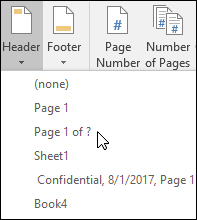
Instead of picking a built-in header or footer, you can choose a built-in element. Many elements (such as Page Number, File Name, and Current Date) are found on the ribbon. For worksheets, you can work with headers and footers in Page Layout view. For chart sheets or charts, you can work with headers and footers in the Page Setup dialog.
Click the worksheet to which you want to add specific header or footer elements.
On the Insert tab, in the Text group, click Header & Footer.
Excel displays the worksheet in Page Layout view.
Click the left, center, or right header or footer text box at the top or the bottom of the worksheet page.
Tip: Clicking any text box selects the header or footer and displays the Header and Footer Tools, adding the Design tab.
On the Design tab, in the Header & Footer Elements group, click the elements that you want.

Click the chart sheet or chart where you want to add or change a header or footer element.
On the Insert tab, in the Text group, click Header & Footer.
Excel displays the Page Setup dialog box.
Click Custom Header or Custom Footer.
Use the buttons in the Header or Footer dialog box to insert specific header and footer elements.
Tip: When you rest the mouse pointer on a button, a ScreenTip displays the name of the element that the button inserts.
For worksheets, you can work with headers and footers in Page Layout view. For chart sheets or charts, you can work with headers and footers in the Page Setup dialog.
Click the worksheet where you want to choose header and footer options.
On the Insert tab, in the Text group, click Header & Footer.
Excel displays the worksheet in Page Layout view.
Click the left, center, or right header or footer text box at the top or the bottom of the worksheet page.
Tip: Clicking any text box selects the header or footer and displays the Header and Footer Tools, adding the Design tab.
On the Design tab, in the Options group, check one or more of the following:
To remove headers and footers from the first printed page, select the Different First Page check box.
To specify that the headers and footers on odd-numbered pages should differ from those on even-numbered pages, select the Different Odd & Even Pages check box.
To specify whether the headers and footers should use the same font size and scaling as the worksheet, select the Scale with Document check box.
To make the font size and scaling of the headers or footers independent of the worksheet scaling, which helps create a consistent display across multiple pages, clear this check box.
To make sure the header or footer margin is aligned with the left and right margins of the worksheet, select the Align with Page Margins check box.
To set the left and right margins of the headers and footers to a specific value that is independent of the left and right margins of the worksheet, clear this check box.
Click the chart sheet or chart where you want to choose header or footer options.
On the Insert tab, in the Text group, click Header & Footer.
Excel displays the Page Setup dialog box.
Select one or more of the following:
To remove headers and footers from the first printed page, select the Different first page check box.
To specify that the headers and footers on odd-numbered pages should differ from those on even-numbered pages, select the Different odd & even pages check box.
To specify whether the headers and footers should use the same font size and scaling as the worksheet, select the Scale with document check box.
To make the font size and scaling of the headers or footers independent of the worksheet scaling, which helps create a consistent display across multiple pages, clear the Scale with Document check box.
To guarantee that the header or footer margin is aligned with the left and right margins of the worksheet, select the Align with page margins check box.
Tip: To set the left and right margins of the headers and footers to a specific value that is independent of the left and right margins of the worksheet, clear this check box.
To close the header and footer, you must switch from Page Layout view to Normal view.
On the View tab, in the Workbook Views group, click Normal.
You can also click Normal 
On the Insert tab, in the Text group, click Header & Footer.
Excel displays the worksheet in Page Layout view.
Click the left, center, or right header or the footer text box at the top or the bottom of the worksheet page.
Tip: Clicking any text box selects the header or footer and displays the Header and Footer Tools, adding the Design tab.
Press Delete or Backspace.
Note: If you want to delete headers and footers for several worksheets at once, select the worksheets, and then open the Page Setup dialog box. To delete all headers and footers instantly, on the Header/Footer tab, select (none) in the Header or Footer box.
Need more help?
You can always ask an expert in the Excel Tech Community or get support in the Answers community.
Источник
Learn what headers and footers are, where they’re located, and how to print them in Excel.
Want more?
You can add headers to the top and footers to the bottom of a worksheet.
When you print the worksheet, the headers and footers also print.
For example, you might create a header with the file path and a footer with page numbers.
Headers and footers display only in Page Layout view and on printed pages.
Select the worksheet you want to add a header or footer to.
Click the Insert tab, and click Header & Footer.
This displays the worksheet in Page Layout view.
The Header & Footer Tools Design tab appears, and by default, the cursor is in the center section of the header.
I’m selecting the left section. I want to add the file path to it, so I click the File Path button.
I click anywhere else on the worksheet and the file path displays in the left section of the header on all pages.
To add a footer, scroll to the bottom of the page, select the section of the footer you want to add something to.
On the Design tab, click an element, such as Page Number, click anywhere else on the worksheet, and page numbers now display in the footer.
There are other elements on the Design tab, check them out.
You can also just type information in a header or footer.
Select the section you want to add text to and type your text.
When you’re done, you might want to return to Normal page view, to have more room to work on your worksheet.
Click the worksheet, click the View tab, and click the Normal button.
Источник
Excel Header and Footer (Table of Contents)
- Header and Footer in Excel
- How to Add Header and Footer in Excel?
Header and Footers are the part of page setting which are used to make any worksheet or workbook better for printing. We can add Page Number, Heading, Topic and Chapter name, Company name and Logo, Author’s name and version of a publication, etc. To apply Headers and Footers in Excel, go to the Insert menu tab under the Text section; we have the option Headers and Footers. Once we type any text, it will be marked on all the pages. Go to Footer and from the Design menu tab to insert the page numbers and select the Page Number option. There we have different types of formats to apply for a single thing.
How to Add Header and Footer in Excel?
To add a Header and Footer in Excel is very simple and easy. Let’s understand how to add a Header and Footer in Excel with some examples.
You can download this Header and Footer Excel Template here – Header and Footer Excel Template
Example #1
First, fix the Top row and First column of the Excel sheet by marking the first column with 1-15 numbers and the top row with A-G Alphabets. (You can use any indices as per your need), by doing this, we will fix the page length in order to see the final page layout.
Now, for adding Header and Footer in the excel sheet, go to the Text option from Insert in the Menu bar and select Header and Footer.
Once you click on Header and Footer option, it will be activated in the currently opened excel sheet.
As you can see, the Numbers and Alphabets we entered before have framed the page border to make the page layout. Put the cursor on Click to add header and enter header name as per need.
Now go down to enter or change Footer. (If the page size is large, which is normally a default set, go down to change footer)
Put the cursor on Click to add Footer, and enter footer name as per need.
Now to see, how Header and Footer in excel will look like, go to print preview by pressing Ctrl+P or go to Print option in the File menu to see the preview.
Example #2
Here we have Product Sale data of a month in this example.
Now, for adding Header and Footer in this excel sheet, go to the Insert Menu bar and select Header and Footer.
Once you click on Header and Footer, then Header and Footer option will be activated in the current opened excel sheet. Here, our data is arranged in a page set with all columns of a table on a single page.
Now click on the Header tab, and it will be to be filled with text.
Now in the header, you can enter the name of the table, document revision number, and the type of data in a different format or font size, as per your requirement. Below, we can see the main Product Sale in the main header, which is in bold and high in text size; document revision number and Document type as Sample Data are kept in the corner of the Header.
Now, here we will see another step of adding page numbers. For that, go to any page or footer of the first page and click on the Page Number tab from the Design option from the Header and Footer Tools menu. This will enable the cell where you want to see Page Numbers in every sheet.
Once you click on the Page Number tab, the selected will be added with “&[Page],” which is nothing but the starting page number “1”. This will be visible when you change the cell or come out from edit mode from the same cell.
By escaping out of edit mode from that footer, page numbers will start forming in sequence, and that will be created in all the subsequent pages as below.
Also, in Footer, you can enter the Copyright detail or number, your company’s name, if the format allows you to do so. Below, we have filled the footer with some data.
As you can see in the above screenshot, we have put the company’s name, which is ABC Corporation, in a light color to make a watermark impression and kept CopyRight Reserved © in small fonts. You can use your format as well.
To make Header and Footer in excel more attractive, we have a few more functions, which are there to make our Header and Footer in excel more attractive and professional. We have seen how Header, Footer, and Page Number work. Now we will see a few more functions, as shown in the below screenshot.
- Number of Pages – It shows the total number of pages where complete data are available. (Formula = &[Pages])
- Current Date – It gives the current or today’s date. (Formula = &[Date])
- Current Time – It gives the current or publishing time. (Formula = &[Time])
- Sheet Name – It gives the name of the sheet, which is entered in a sheet to be shown in the Header or Footer. (Formula = &[Tab])
- File Name – Same as Sheet Name, It also gives the name of the file to be shown in Header or Footer (Formula = &[File])
- Go to Header/Go to Footer – These are used as a shortcut path to go in Header and Footer directly, instead of using a scroll bar to do up and down.
The design menu bar has one Option; by using that, we can change the page setting, Margins, Alignments, and Scaling the document as per its own defined standards.
After entering complete data and using all functions available in Excel, we’ll be having our Header and Footer page setup as below;
Pros of Header and Footer in Excel
If you want to present the data in printable form, then Header and Footer in excel make the layout attractive.
- Once you add Header and Footer in excel, it will save time in adding Heading, Page Number, Revisions, Copy Right one at a time, and it will be carried on in all sheets.
- It saves time in changing the Header and Footer of each sheet by doing it manually.
Things to Remember
- Once you add any Header and Footer name, that will be carry forwarded to all sheets, so if there are any changes that need to be made in any sheet regards to Header and Footer, then for that, we need to go to the Header and Footer of that sheet to make changes.
- If you have not framed the table with cell borders then, the print preview will show the table without its border, and data will look close to each other.
Recommended Articles
This has been a guide to header and footer in excel. Here we discuss how to add header and footer in excel and how to print preview along with practical examples and downloadable excel template. You can also go through our other suggested articles –
- Column Header in Excel
- Excel Header Row
- Excel Rows and Columns
- Freeze Columns in Excel
Headers and footers in Excel are inserted across multiple products of Microsoft Office. You can also add headers and footers to Word documents.
This article is a step-by-step guide to adding, removing, and completely modifying headers and footers in an Excel file. We will also learn to add watermarks to an Excel worksheet in this tutorial.
So, read till the end to learn thoroughly about headers and footers!
Recommended read: How to Use VLOOKUP function in Excel?
How to Add or Remove Headers and Footers in Excel?
A header, once created, is reflected on every new page you create in Excel. Similarly, a footer is automatically added at the bottom of every page after you create it. Let’s learn to create both headers and footers in excel.
Adding a header and footer
- Open an Excel file.
- Go to the Insert tab.
- Pull-down on Text and select Header & Footer.
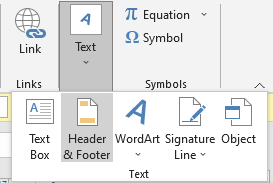
You can find that both headers and footers in your sheet are divided into 3 sections each. This allows you to add up to three header titles or footers to a sheet.
Removing or deleting a header and footer
To remove a header or footer, follow these steps.
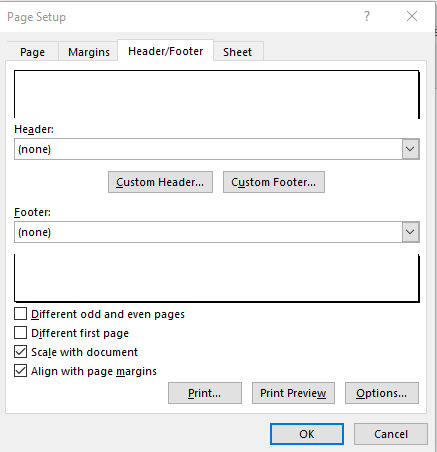
- Click on the cells in the sheet and not on the header or footer.
- Go to the Page Layout tab.
- Open the page formatting options by clicking the Page Setup icon at the lower right.
- Go to the Header/Footer tab and select (none) for both header and footer.
- Click OK.
You can now find that your headers have been removed from all pages in a sheet.
Another way to remove all headers and footers is as follows.
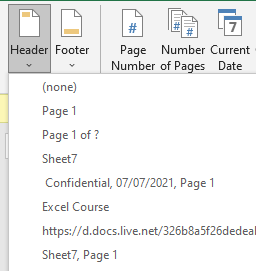
- Click on the header or footer.
- Go to the Design tab.
- Pull-down on Header and press (none) to remove the header.
- Pull-down on Footer and press (none) to remove the footer.
1. Adding custom or predetermined texts in header or footer
Let’s see how we can use and modify headers and footers in Excel.

- Let us name this new header and footer with our preferred name
- Click the header.
- Go to the Design tab.
- Under Header & Footer group, pull-down on Header.
- Select a predetermined heading from this list if you cannot decide.
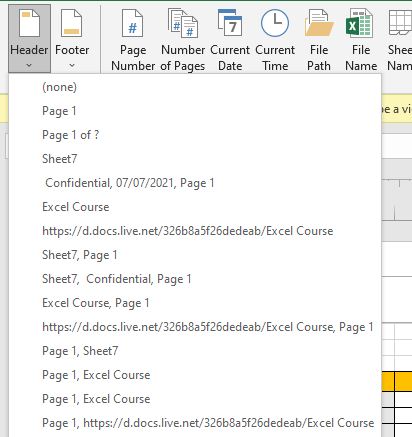
To add a custom or predetermined footer text, do as follows next.
- Click on the footer.
- Type a custom text you want in the footer, or
- Go to the Design tab.
- Under Header & Footer group, pull-down on Footer.
- Select a predetermined text from this list if you cannot decide.
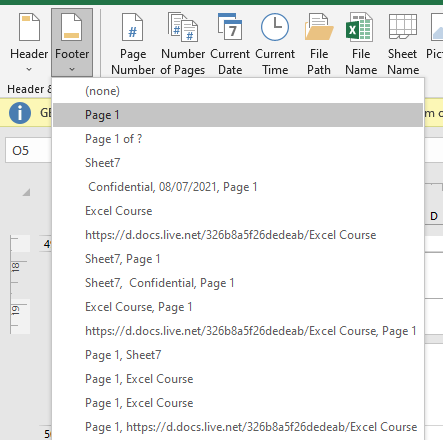
2. Customizing header and footer texts
To customize the header or footer text, follow these steps.
- Select the header text.
- Go to the Home tab.
- Adjust font settings under Fonts group.
Any changes you make to the header get reflected on every single page in Excel. Let’s add some content to all three sections of the header.

You can see that we have created and two headings and inserted a page number in the right section.
3. Navigating between headers and footers in Excel
To navigate from the header to the footer or back, do as follows next.
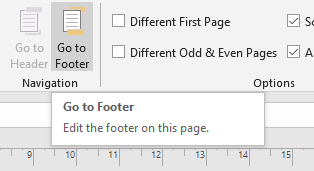
- If you’re in the header, then click on the header.
- Go to the Design tab.
- Under Navigation, select Go to Footer.
- If you’re in the footer, then click on the footer.
- Go to the Design tab.
- Under Navigation, select Go to Header.
This way you can easily navigate from the header to the footer and back.
4. Insert page numbers to header or footer
To add page numbers to headers and footers in Excel, do as follows.
- Click on any header or footer section you want to insert page numbers to.
- Go to the Design tab, under Header & Footer Elements, select Page Number.
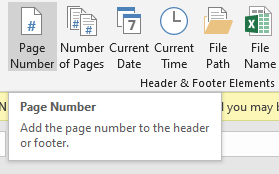
You can now see that page numbers have been inserted to all pages, and they change as you move to the next page in a sheet and only if there is any content present on the next page.
5. Inserting number of pages to header or footer
To add a total page count in the header or footer, do as follows.

- In the Design tab, under the Header & Footer Elements group select Number of Pages.
- You can manually type “Pages” after &[Pages] for better understanding.

You can see that the header and footer now display the total number of pages.
6. Insert current date to header or footer
To insert the current date in the header or footer, here are the steps.
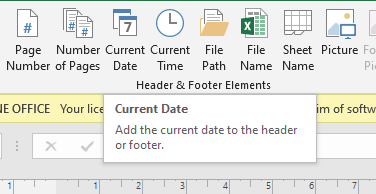
- In the Design tab, under the Header & Footer Elements group select Current Date.

You can now see the current date is displayed here in the footer.
7. Insert current time to header or footer
To insert the current time in the header or footer, do as follows.
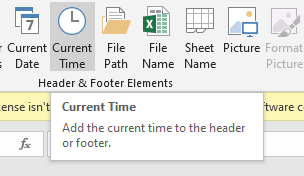
- In the Design tab, under the Header & Footer Elements group select Current Time.

You can now see the current time is displayed in the footer in the image above.
8. Inserting current file path or location to header or footer
To insert the current location of your Excel workbook in the header or footer, do as follows.
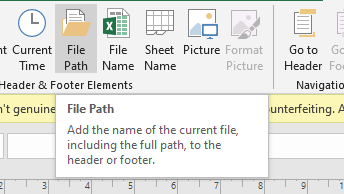
- In the Design tab, under the Header & Footer Elements group select File Path.

You can now see the file location or file path is displayed in the footer in the image above.
9. Inserting file name to header or footer
To insert the file name in the header or footer, do as follows.
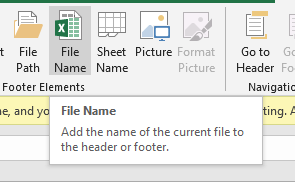
- In the Design tab, under the Header & Footer Elements group select File Name.

You can now see the file name is displayed in the footer.
10. Inserting sheet name to headers and footers in Excel
To insert the current sheet name in the header or footer, do as follows.

- In the Design tab, under the Header & Footer Elements group select Sheet Name.

You can now see the sheet name is displayed in the footer.
How to Add Watermark in an Excel Sheet?
You can easily add a watermark to your Excel worksheet and protect your data from being copied or stolen after getting printed.
You can add an image watermark in Excel to protect your data. Let’s learn it with the help of the steps below.
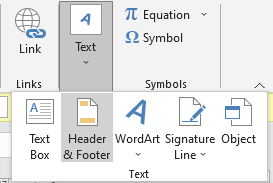
- Open an Excel file.
- Go to the Insert tab.
- Pull-down on Text and select Header & Footer.
- Click on the middle header section if you want to place the watermark in the middle of the sheet.
- Now, to add an image watermark, go to the Design tab.
- Click on Picture, under the Header & Footer Elements group.
- A window named Insert Pictures opens where you can choose to upload an image from your system files, Bing image search, or your personal OneDrive account.
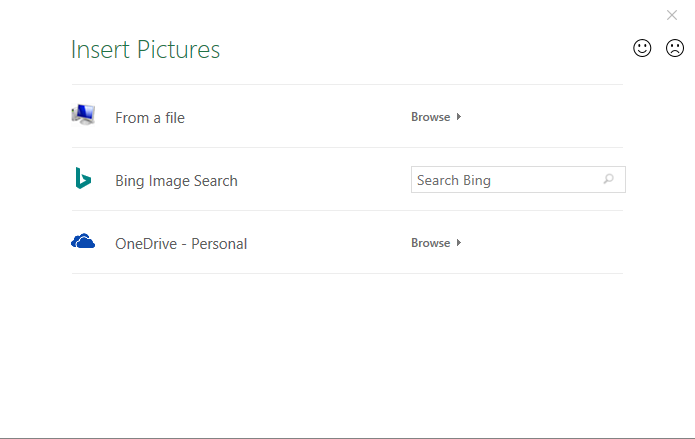
- Once you’ve selected your watermark image, this is what you will see in the header.

- Do not worry, this is normal. You can adjust the position of your watermark by pressing ENTER before &[Picture] until you reach the desired position, like this.
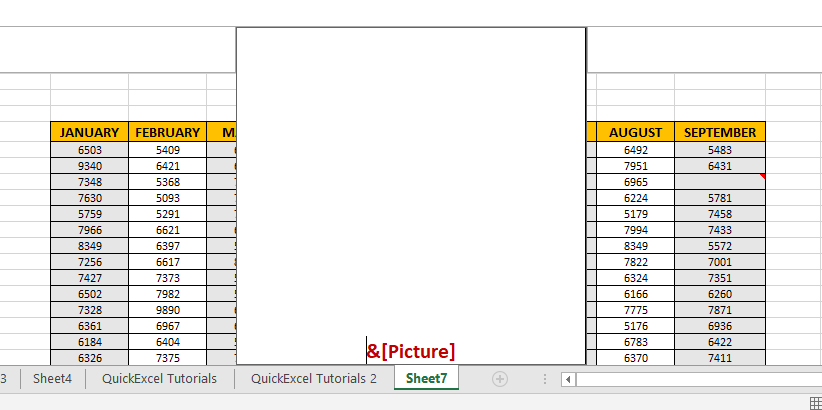
- Click outside the white box to view the image.
This is how our image watermark looks like after applying.
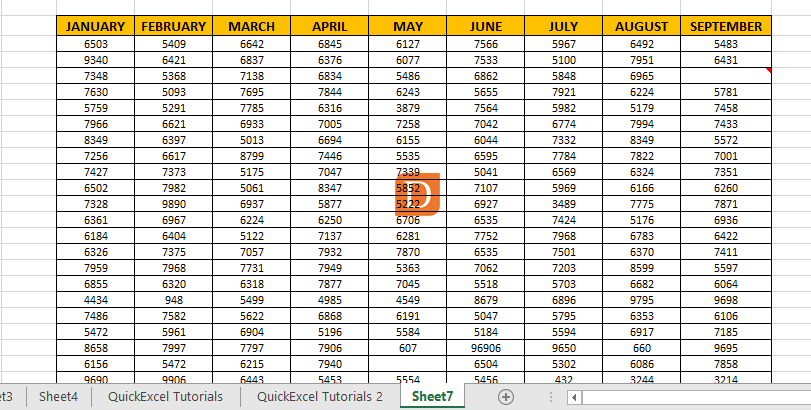
This image looks quite small, here are the steps to increase the size of your watermark in Excel.
- Click on the header section with the picture inserted.
- Go to the Design tab.
- Select Format Picture under Header & Footer Elements.
- A window named Format Picture opens where you can adjust the size under the Size tab.
- You can even adjust the brightness or transparency of your watermark under the Picture tab.
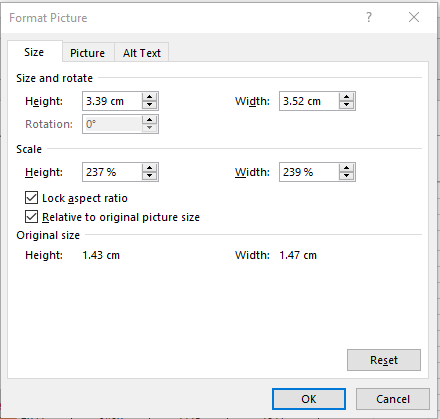
- Hit OK when you’re done.
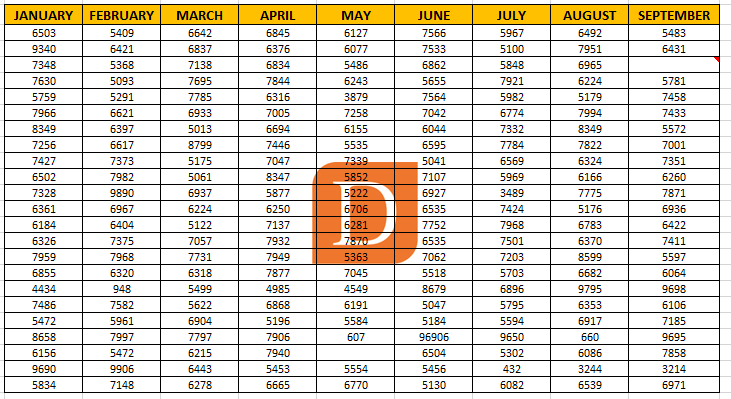
You can now see that the watermark has been resized to a larger size.
Conclusion
This article was all about adding, removing, and modifying headers, footers, and watermarks in Microsoft Excel. If you have any doubts regarding the topics discussed above, feel free to comment below, and we will help you out!
Reference: Microsoft


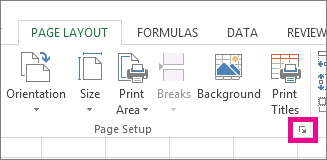
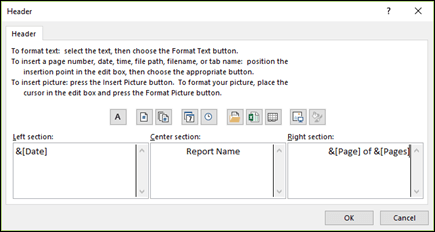




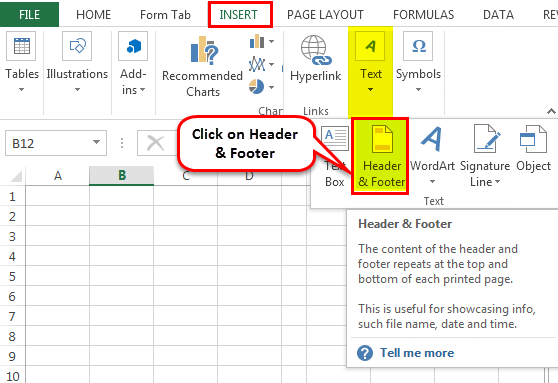

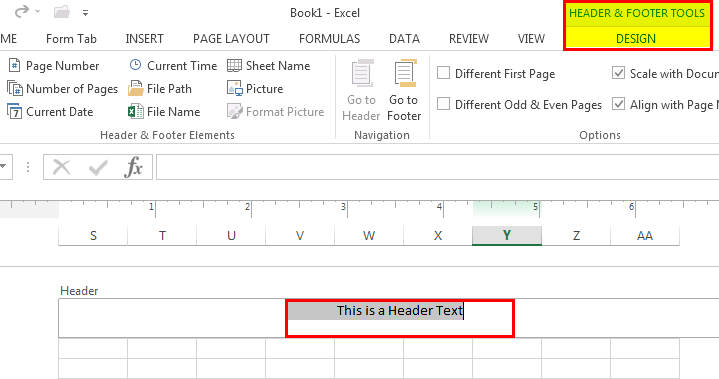
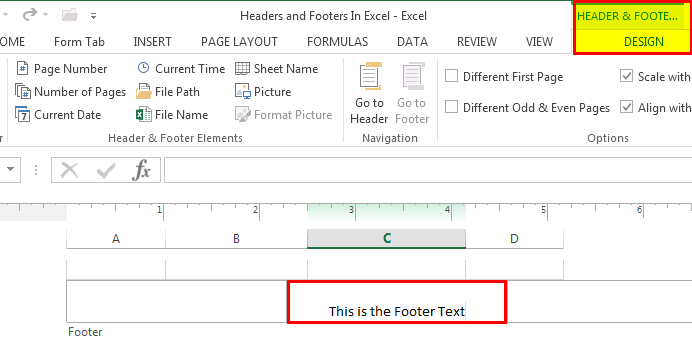
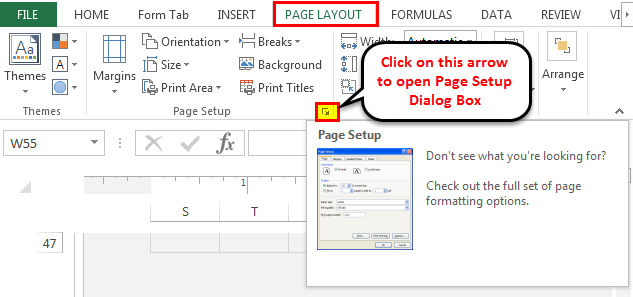
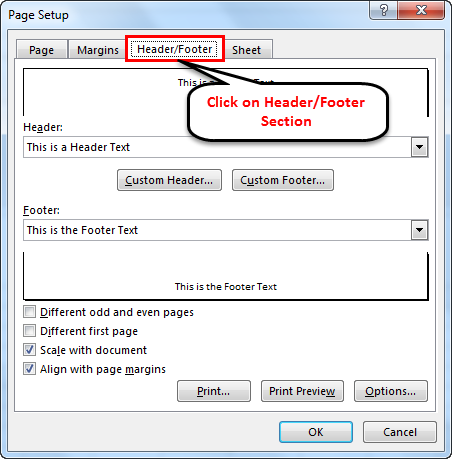








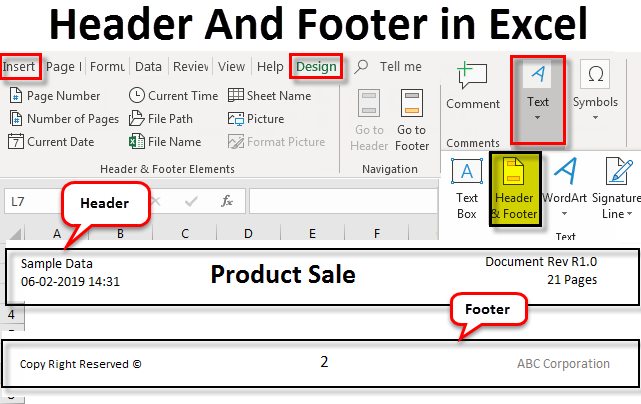
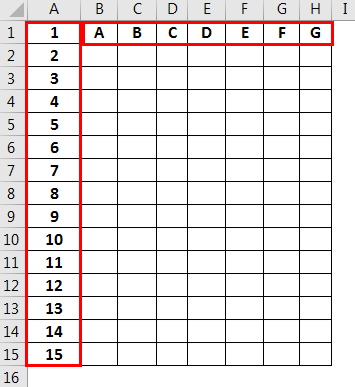
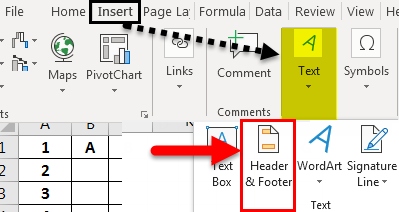
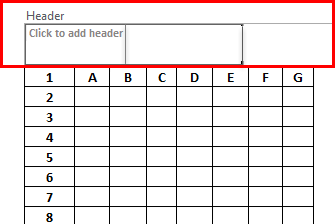
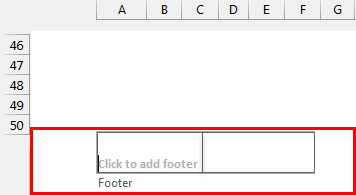
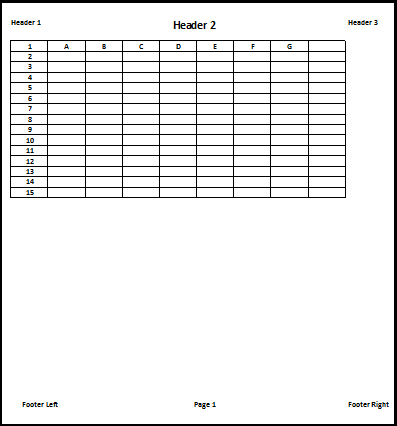
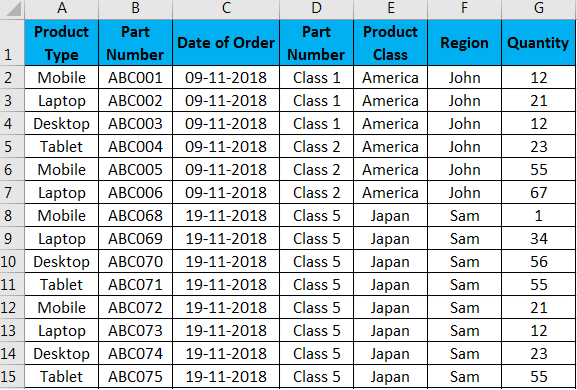
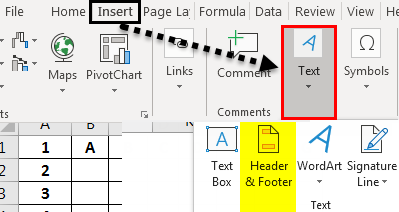
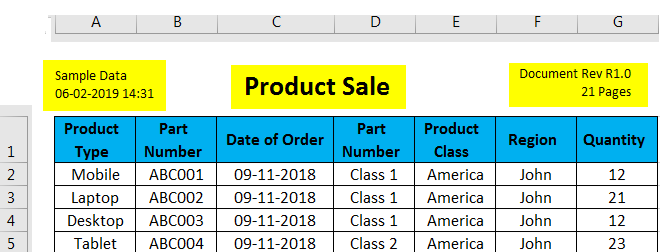
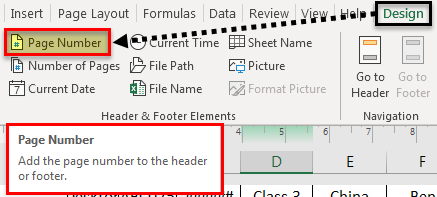
![&[Page]](https://cdn.educba.com/academy/wp-content/uploads/2019/02/Header-and-Footer-in-Excel-example-2-5-2.png)



